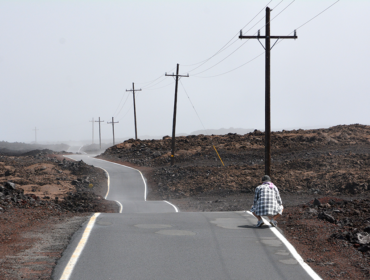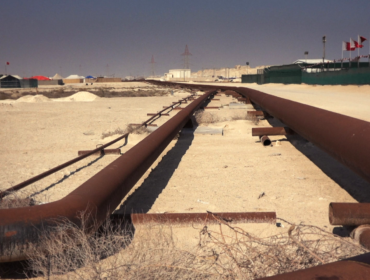Is jet lag a typical human phenomenon due to our technical progress that is first of all characterized by an increasing speed of what ever we do? That humans in the 21st century struggle with the speed of events in time seems obvious. Jet lag is only one of the many symptoms related to this acceleration that is so overwhelming, and it is one that quite some research is done on.
Obviously, the human being is not really made for fast travelling bridging several time zones within hours. Nevertheless, so many of us have this tremendous inborn curiosity in them to see the world’s remotest places. Others have to travel because their job demands it, so they have little choices.
In many sports traveling is part and parcel of the job, so it is in triathlon. Not only professionals travel around the world also many age groupers do so. Therefore I thought it may be interesting to have a closer look at this phenomenon that is definitely bothering all of us who love travelling.
At this moment of time many suffer from the aftermaths of their journey to and from Kona. Others will be confronted with the problem travelling to the races in Florida, Arizona etc, one name it.
In the Olympic year of 2008 with many athletes travelling over large numbers of time zones to Beijing, the question of physical performance has been addressed in some detail. One of the earliest descriptions of the effects of jet lag on physical performance concerned American baseball players who performed significantly worse when playing away over an eastward time zone transition.
Jet lag or travel fatigue
Travelling as such is related with fatigue symptoms and problems of adaptation which are not necessarily due to jet lag. The term jet lag per definition describes health issues that occur after you have been crossing several time zones. Travelling as such causes regulatory disturbances of your body even without jet lag. You certainly have experienced these feelings of discomfort due to functional dysregulations. Common are sleep disturbances, gut and stomach issues, head ache, mood swings, weak performance, common colds or other infections due to the travelling stress caused by dysfunctions of your stress coping system and your immunity. After one or two nights of good sleep these problems slowly subside. Then you have fully arrived at destination.
With jet lag that’s different, and it is again different whether your travel is east or westbound.
Some science behind the jet lag – we are a diurnal species
Jet lag is defined as a circadian desynchrony, a disruption of the harmonic entanglement with our environment. Our body functions are tightly coordinated over time, each cell, each organ has got its own clock that is overall coordinated by a nucleus in the brain (supra-chiasmatic nuclei of the hypothalamus, SCN), at least that is what is known until today. The basic rhythm is approximately circadian (24 hours), with of course an individual variability of several minutes. Biological circadian rhythms are internally generated. They even persist in the absence of time cues such as alternating light and darkness. Individuals kept in a time free environment (or at least with very weak time cues), manifest their own endogenous periodicity – ‘free-running’, an inherited characteristic. Removal of the SCN in mammals leads to the loss of virtually all circadian rhythms.
The mismatch between the timing of the internal circadian clocks and the external environment causes a pattern discomfort that is called jet lag. After time zone changes the circadian system adapts slowly to realign with the new schedule, approximately one day for each hour of time zone change, faster westwards, with different components of the system adapting at different rates (internal desynchrony).
The perceived manifestations vary from one individual to another, with number of time zones crossed, with direction and timing of flights and probably with seasons. However, the major complaints are poor sleep, daytime fatigue and poor performance. Travelling eastwards, short sleep and long sleep latency are common, travelling westward short sleep and early wake up are manifest. Poor alertness and fatigue during daytime are attributed partly to a lack of sleep that accompanies most travelling and partly to the concomitant presence of night time rhythm physiology. Under circumstances you are perfectly rhythmized your nightly core body temperature is low, so are alertness and performance, metabolism is in build-up mode and melatonin secretion peaks.
There are possible long term consequences of frequent desynchrony as evidenced by epidemiological and animal studies. These include cognitive deficits, gastrointestinal problems, increased risk of cancer, infertility and heart disease. However, not all reports are consistent. Adapting to phase shift becomes harder as we grow older for uncertain reasons. Moreover the genetic background influences our adaptation abilities. Various polymorphisms have been identified in human clock genes and associations are evident with phenotypic characteristics such as diurnal preference, vulnerability to disease and probably rate of adaptation to phase shift.
What can we do to facilitate the adaptation process
Jet lag is a problem for most time zone travellers, affecting sleep, performance and may possibly have long-term health consequences for certain individuals (see genetic background). It is due to the misalignment of the internal circadian clock(s) with external time cues. For short stopovers (1–2 days) it is advisable not to try and adapt but to schedule critical activities to daytime in the departure time zone and maintain alertness and sleep by short- term measures such as a real good nap, caffeine and short acting hypnotics. For intermediate length stays (3–5 days) it would be optimal to plan activities in an intermediate phase between the departure and destination time zone. The circadian peak is right within the sleep period at destination. This could be a solution to the problem, but honestly is quite unrealistic to achieve.
For long stays in the destination time zone (more than 4–5 days) strategies to hasten adaptation can be employed. These include timed exposure to light of suitable spectral composition and intensity (natural bright light when this can be appropriately timed is best, but will be dependent on season in temperate zones). The American Academy of Sleep Medicine recommends the timed use of the chronobiotic melatonin to shorten adaptation. Melatonin itself is now available in Europe on prescription and melatonin agonists are becoming available. The use of both light and melatonin requires careful attention to timing and, in the case of light, of avoidance as well as exposure. The maximum efficacy for jet lag avoidance is by pre-flight adaptation, however, this requires time and commitment.
Summary
Travel fatigue abates by the next day, if travellers succeed to have a good night’s sleep; jet lag after eastward flights lasts for several days roughly equal to two-thirds of the number of time zones crossed and about half the number of time zones crossed after westward flights. Again, there are obvious differences between individuals. To hasten adaptation would be a great achievement, but is tricky and time-consuming. Many of us don’t have this time due to their restricted holiday time or their jobs’ pressure.
Caffeine and short acting hypnotics, light exposure and melatonin again at the right time of the circadian shift between departure and destination, enough sleep, light and healthy food to avoid stress on stomach, gut and immune system, all of them closely related and easily affected by long-distance travelling are options to make it easier to adapt to a new time zone.
Ref.
Arendt J: Managing jet lag: Some of the problems and possible new solutions. Sleep Medicine Reviews 13, 249–256, 2009
Waterhouse J, Reilly Th, Atkinson G, Edwards B: Jet lag: trends and coping strategies. Lancet, 369: 1117–29, 2007





1 Comment